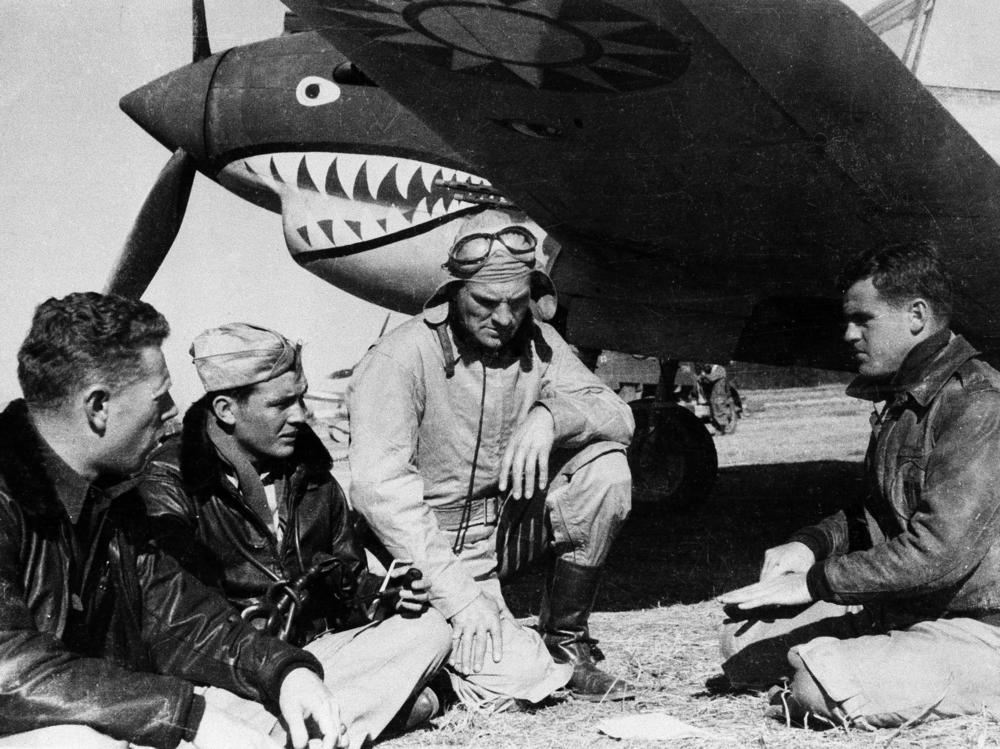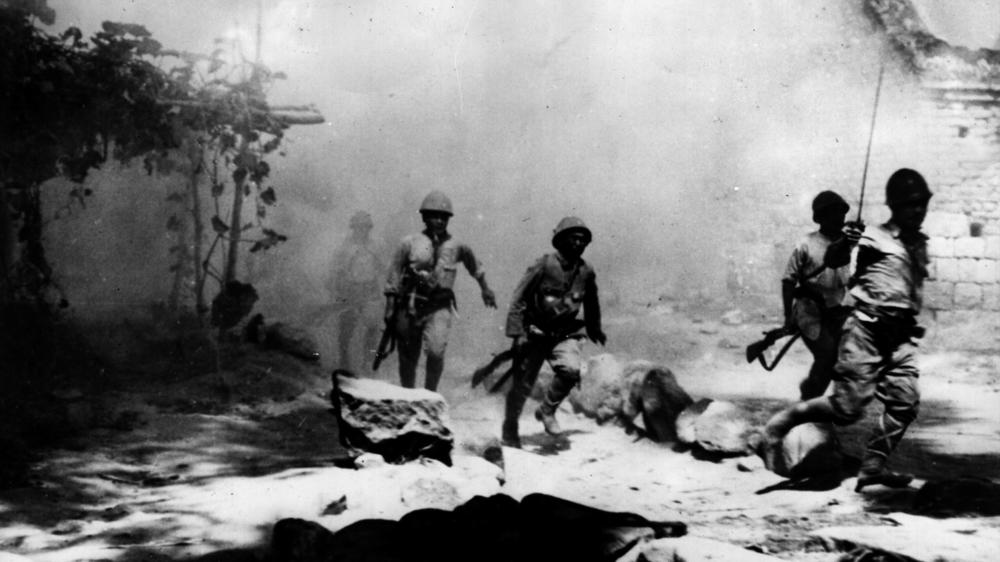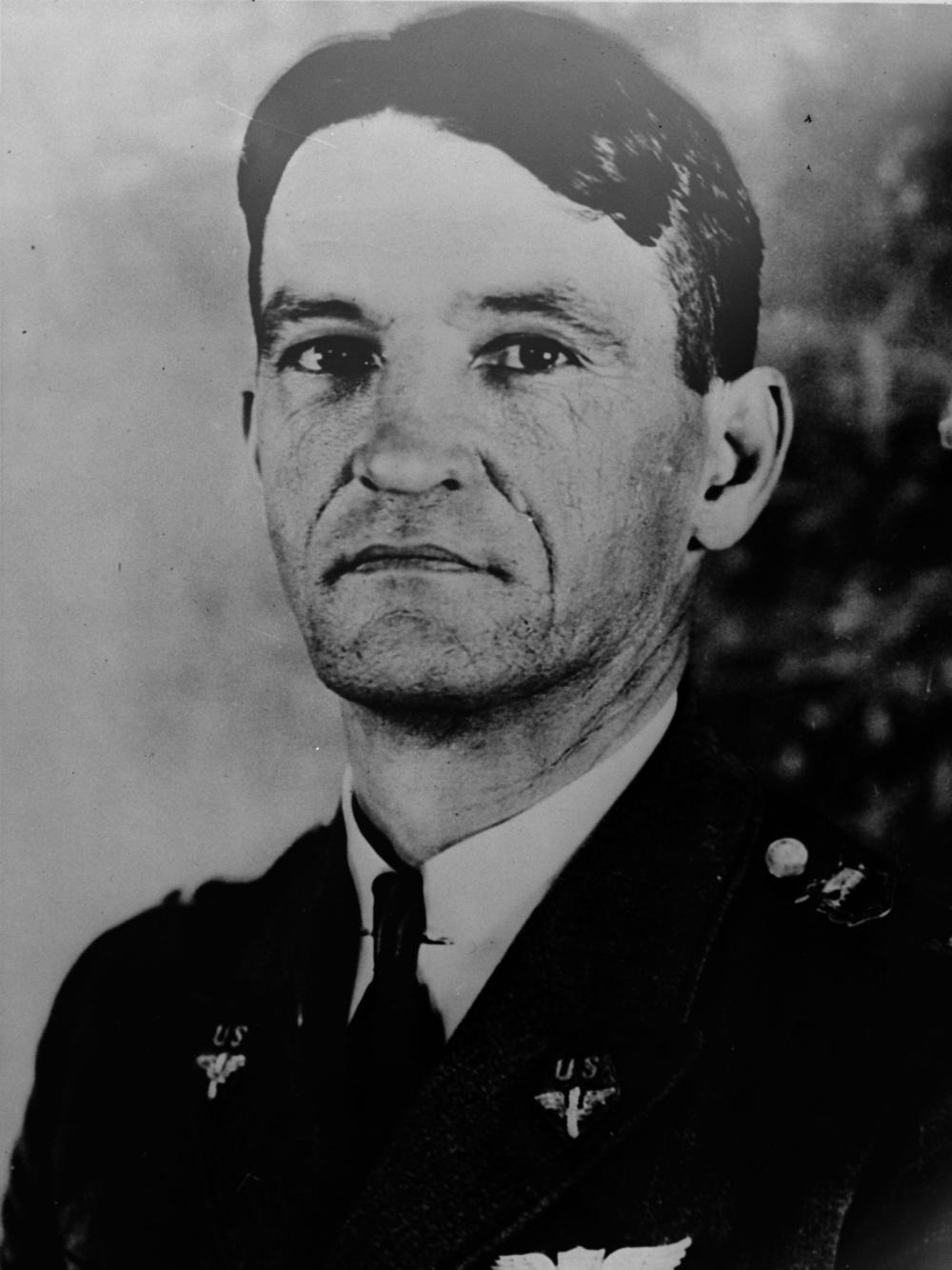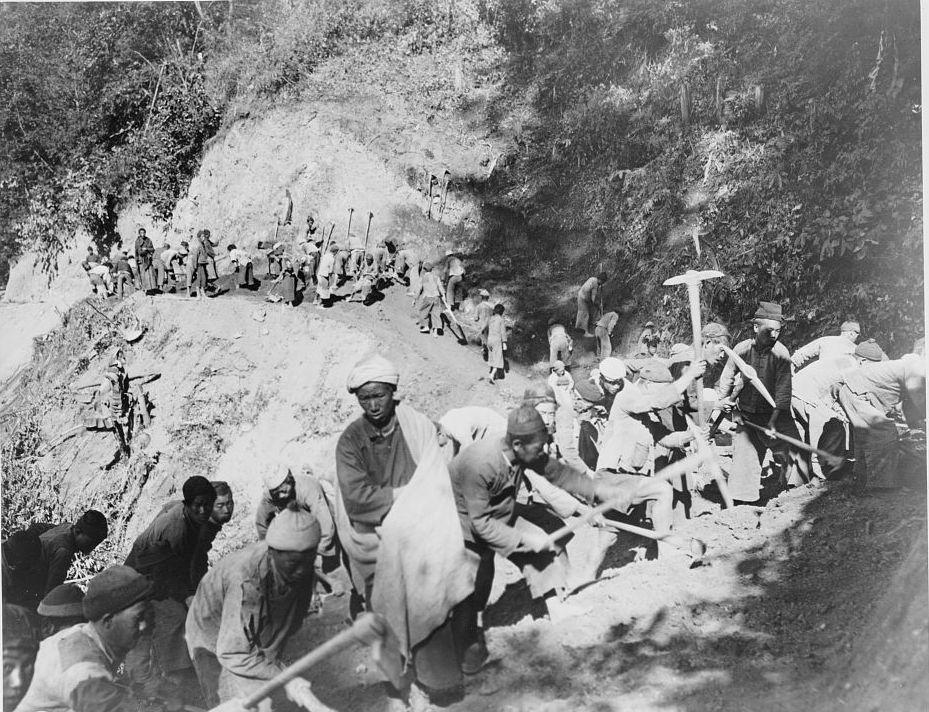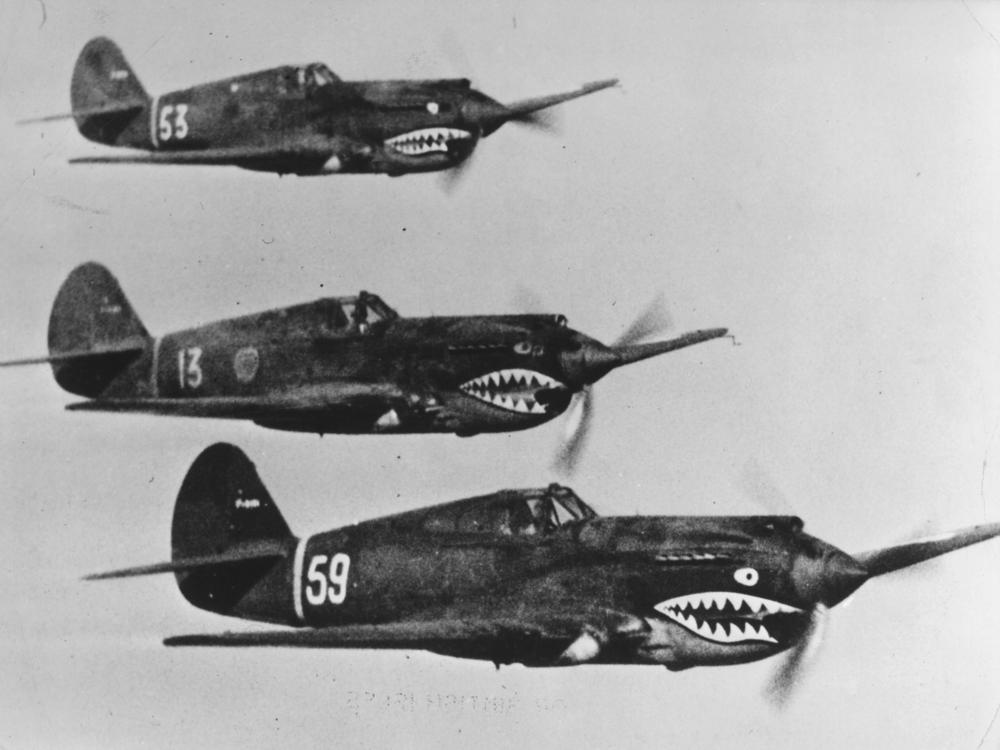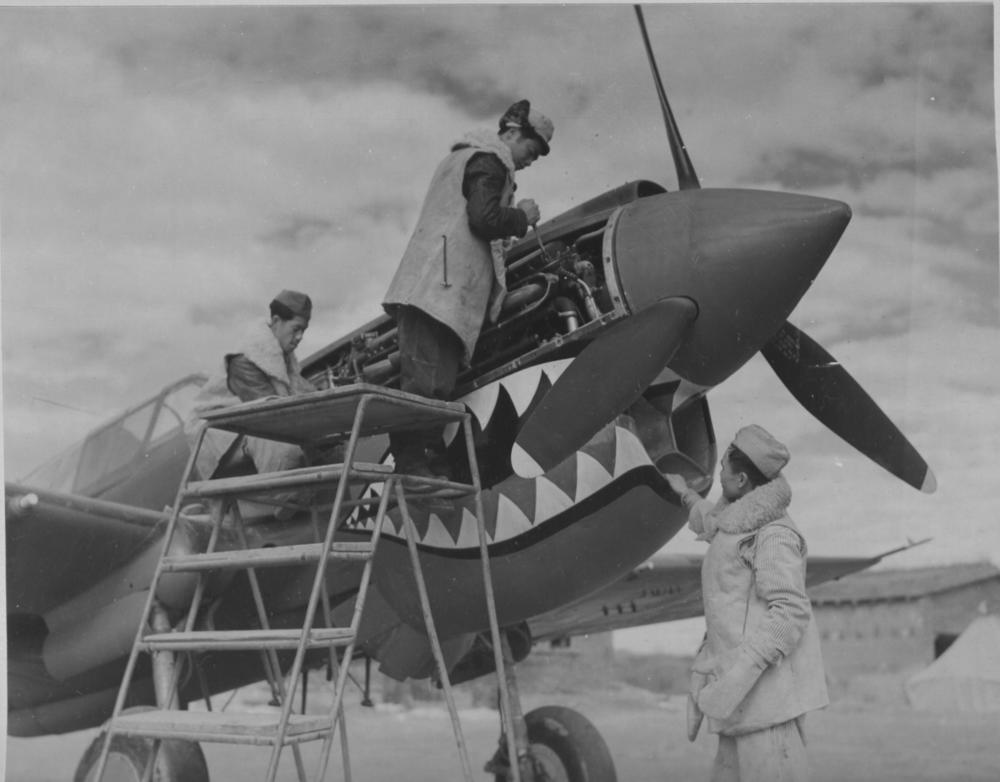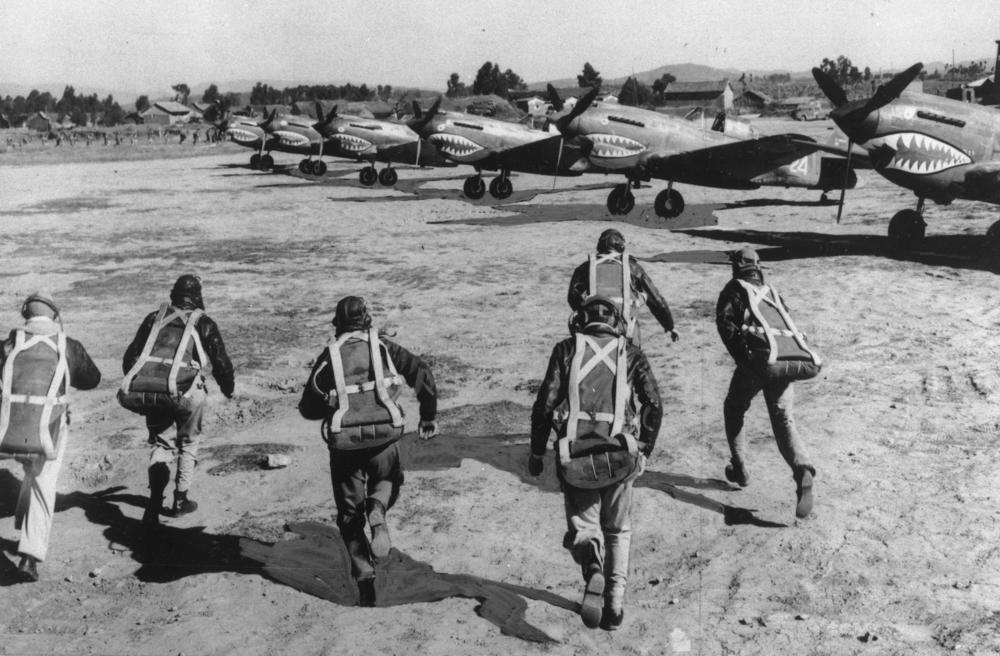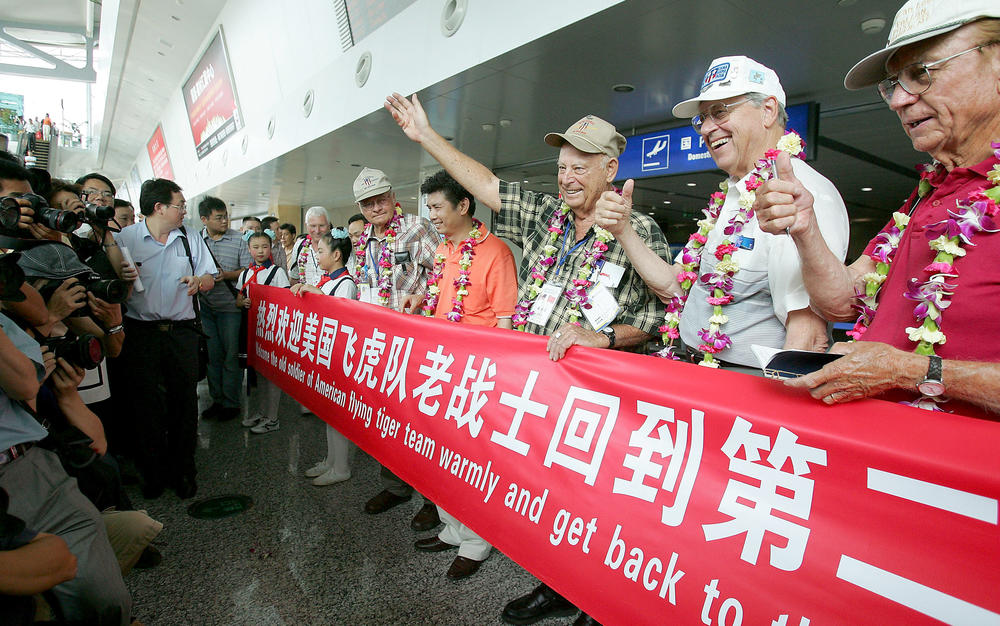Section Branding
Header Content
The Flying Tigers: How a group of Americans ended up fighting for China in WW II
Primary Content
Eighty years ago this week, a small group of American aviators fought in their first battle in World War II.
Their mission was unusual: They were mercenaries hired by China to fight against Japan.
They were called the American Volunteer Group and later became known as the Flying Tigers. Though only in combat for less than seven months, the group became famous at the time for its ability to inflict outsize damage on Japan's better-equipped and larger aircraft fleet.
Their victories came when Japan seemed unstoppable. "The AVG was a bright spot in history when everything was bleak and black, and they have received a lot of recognition for that," says Larry Jobe, president of the Flying Tiger Historical Organization.
On the 80th anniversary of their first combat, here's an abbreviated history of how Americans ended up fighting for China.
The Sino-Japanese war
In the West, 1939 is considered the start of World War II. But in Asia, China and Japan had been at war since 1937.
China was already fighting its own civil war between the Nationalists of Chiang Kai-shek and Communist forces. The two sides came to a truce to fight against the Japanese. China, however, had little air power to fend off Japanese bombings.
Enter Claire Lee Chennault, a U.S. Army aviator, instructor and tactician, once described by Time magazine as "lean, hard-bitten, taciturn." Health problems and disputes with his superiors pushed him into retirement from his position with the Army Air Corps in 1937, at age 43.
But he quickly got a lucrative job offer with the Chinese Air Force, which was operating under Chiang's Nationalist government. Chennault was asked to come survey the readiness of its fleet.
"Chiang Kai-shek thought he had 500 airplanes," says Nell Chennault Calloway, who is Chennault's granddaughter and CEO of the Chennault Aviation & Military Museum in Monroe, La. "Chennault said, 'You have 500, but you only have 91 that fly.' That's how far behind they were in aviation."
Once the war with Japan officially broke out that summer, China hired Chennault as an adviser to its air force. He became its de facto commander.
By 1940, after losing backing from the Soviets, China desperately needed more planes. At the time, the U.S. was not officially part of World War II. But President Franklin Delano Roosevelt was concerned about the prospect of Japan defeating China and turning its sights on the U.S.
Chennault traveled back to the U.S., pulling what strings he could to get planes. With the help of T.V. Soong, a Chinese official who was also Chiang's brother-in-law, a deal was worked out to allow China to buy 100 American-made Curtiss P-40 fighter planes.
As for who would fly and maintain them, many of the pilots in China's existing air force were poorly trained. So Chennault sent recruiters to U.S. military bases.
"He managed to get Roosevelt to allow some of our military pilots — that was the original AVG — to resign their commissions in the U.S. military and go to China as mercenaries, basically, because it was against the international rules for any American military person to be involved in the conflict over there," Jobe tells NPR.
This was mid-1941 — before Pearl Harbor and before the U.S. declared war on Japan.
"By using Chinese funds to buy the aircraft and supplies and pay the salaries of the proposed crews, the U.S. government could retain a façade of neutrality, while helping China against the Japanese," the Department of Defense's history of the Flying Tigers explained.
To make recruitment easier, pilots and mechanics were offered pay that was often more than double what they were making before.
So in summer and fall of 1941, 99 pilots — 59 from the Navy, seven Marines, and 33 from the Army — traveled to Asia, along with about 200 support crew, according to the DOD's history. About a dozen of them were Chinese Americans, says Yue-him Tam, a Macalester College history professor who studies China and Japan.
Those who traveled had various motivations — a change of scenery or a chance to show their skills in combat. Calloway thinks many stayed to help with the "desperate situation" in China. Some came for the money.
Pilot Gregory "Pappy" Boyington, who would go on to receive the Medal of Honor and the Navy Cross, told Aviation History Magazine in the 1980s: "I resigned my commission and accepted the job with the AVG in September 1941, since rank was slow in coming and I needed the money. ... And with an ex-wife, three kids, debts and my lifestyle, I really needed the work."
Burma was central to keeping China supplied
The AVG's base was in Kunming in southwestern China, far from areas under Japanese occupation.
There was a hitch to being there, however — no runways to land planes.
So thousands of Chinese built them by hand. "The Chinese people — the peasants, the working class people in particular, also — volunteered to help to build those runways and airports and also provide services to the American pilots," Tam tells NPR. "They didn't have any tools, modern tools. They used their bare hands, actually, to build those runways."
Meanwhile, the Americans did some training at a British airfield in Burma, the country now called Myanmar.
Their early training was not particularly successful. The pilots had far less experience than Chennault had wanted. Three pilots died and planes and equipment were damaged in various accidents.
It wasn't long before they had to put their training to use. The Flying Tigers' first combat came on Dec. 20, 1941 — 13 days after Pearl Harbor and 12 days after the U.S. declared war on Japan. Japanese bombers attacked the AVG base at Kunming.
The AVG "shot down nine of 10 Japanese bombers. So they were the first Americans actually to have a victory in World War II," Calloway says. Their only loss was one AVG plane that the pilot crash-landed after running out of gas; he was uninjured, according to the DOD's history.
In the following days, the focus of their combat quickly shifted to near Rangoon, Burma. Burma was a British colony at the time and the AVG would assist the British air force in defending Rangoon against Japanese attacks.
Burma was of vital importance to China's war efforts. Japan had sealed off China's coast from supply lines, so China depended on supplies coming in from the port of Rangoon over the mountainous Burma Road to Kunming.
The planes of the AVG, the Curtiss P-40, were not as good as those of the Japanese. But by performing certain maneuvers as outlined by Chennault — namely, high-speed diving and climbing — the AVG pilots were able to exploit some weaknesses in the Japanese aircraft.
"Although, the A.V.G. was blooded over China, it was the air battles over Rangoon that stamped the hallmark on its fame as the Flying Tigers," Chennault later wrote in his memoir Way of a Fighter, as quoted by the AVG Flying Tigers' official website.
Fighting continued through January and February 1942 in Burma and Japanese-controlled Thailand.
"They are credited with shooting down 299 Japanese airplanes confirmed, about that many unconfirmed, and only lost 12 of their own in actual combat, which is a record that's never been broken to this day," Calloway says.
The Japanese forces, however, outnumbered and overpowered the AVG and the British. Rangoon fell in March 1942. But their efforts slowed down the Japanese advance, kept supply lines open and helped China continue to fight.
The AVG was integrated into the U.S. military
By this point, the U.S. was formally at war with Japan and there was no need for pretense. U.S. military leaders pushed for the AVG to be absorbed into the U.S. Army Air Forces. Chennault rejoined the Army in April 1942.
The AVG continued to fly missions into the spring and summer, including stopping a Japanese advance over a crucial river gorge in May, after which Japan "never again threatened" China from the west, the DOD history notes.
On July 4, 1942, the AVG was officially integrated into the new 23d Fighter Group. A handful of pilots and support crew stayed on, but most of the men from the original AVG rejoined their previous branch of the military. Others became civilian transport pilots in China or went back to the U.S. to work as civilians.
Chennault was promoted to brigadier general and led the China Air Task Force, which included the 23d and other units, before assuming command of the 14th Air Force in China in March 1943. He stayed in China for the rest of the war, before retiring from the military (again) in 1945.
An 80-year legacy
The AVG quickly gained fame in the U.S. and China for its early victories — it was a morale boost when the war was going in Japan's favor.
It's unclear who came up with the nickname "Flying Tigers," though it was used as early as a week after their first battle, when Time magazine said the "Flying Tigers swooped, let the Japanese have it." Other publicity came when T.V. Soong, who had earlier worked with Chennault in Washington to gather the planes, helped get The Walt Disney Company design the group's logo of a Bengal Tiger jumping through a V for victory sign. And John Wayne played a character based on Chennault in the 1942 movie Flying Tigers.
Today there are several plaques, memorials and museum exhibits dedicated to the Flying Tigers in China, the U.S., Taiwan and Thailand. The Flying Tiger Heritage Park opened in 2015 in the southern Chinese city of Guilin, built in collaboration with Jobe's Flying Tiger Historical Organization.
The last surviving member of the original AVG, Frank Losonsky, died in February 2020.
Flying Tigers historians are quick to point out how essential ordinary Chinese people were to the mission. Those who paved runways did so as volunteers, Tam says, "to help the American fighters because they were fighting for China, fighting for freedom."
Chinese villagers also suffered immensely to help when pilots were shot down. "The Japanese would go into these villages and they would torture and mutilate and kill the villagers in an attempt to find out where the Flying Tigers were. And in most instances, the villagers would not tell them," Jobe says. "They would suffer the consequences."
"I think, really, the remembrance and the respect for the Flying Tigers was really genuine in China," Tam says.
"The people of the United States volunteered to help China. They put their lives at risk to save the Chinese," he adds, leading many Chinese to think of those Americans as "always friends of China."
Copyright 2021 NPR. To see more, visit https://www.npr.org.
